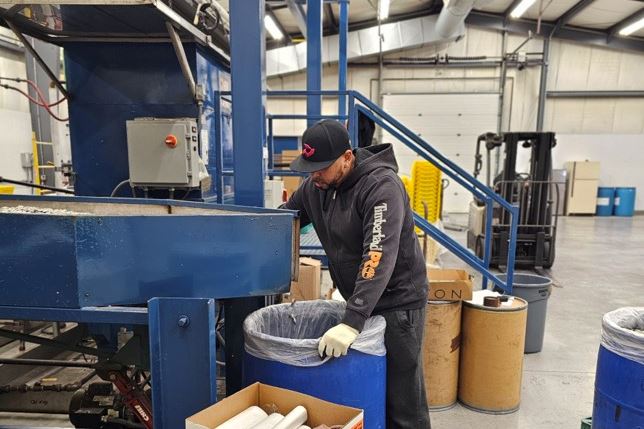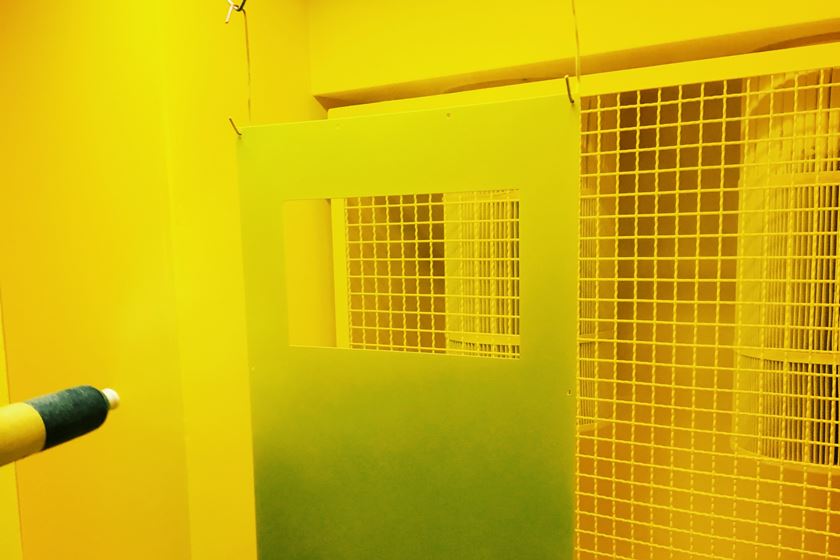Addressing Metallic Powder Challenges
Powder coating using metallic powders can be challenging for some applicators. Powder coating expert Rodger Talbert discusses appearance problems that can arise with metallic powders and best practices for getting good results.
#asktheexpert

Rodger Talbert has more than 30 years of experience in the powder coating industry.
Q: We have recently started using more metallic powder colors for some of our customers. When we coat larger surfaces, we sometimes have issues with differences in the color and gloss. Some areas are darker than others and the surface looks splotchy and uneven. We use manual, corona charging spray guns with one operator on each side of the booth. Why is the surface so inconsistent in color and appearance?
A: Metallic powders are often challenging for some applicators. For starters, they can be manufactured with different methods that can affect the electrostatic application process. Many high-quality metallic powders are “bonded,” a process that fuses the base powder particles and the metallic flake together to create a more homogenous blend. In a bonded powder, the metallic flakes are attached (bonded) to the conventional powder to form a mixture in which all particles have similar specific gravity, size, dielectric properties, shape, etc. Some metallic powders are “dry-blended.” Dry-blending is not as effective at creating a product that is homogenous. Materials may separate somewhat and have different dielectric properties.
Featured Content
All metallic powders have different electrostatic properties when compared to conventional powders that do not contain any metal flake. They charge differently, orient themselves differently in the electric field, and can often position themselves differently on the surface of the part depending on the electric field strength. When an operator changes the gun to target distance, it will change the resistance between the gun and the part and the electric field strength will change. For example, if an operator moves the gun closer to the part, it is possible for metallic flakes that are deposited on the surface of the part to stand up on edge because they are aligning themselves with the electric field. The metallic appearance of the cured powder depends on the angle at which the light reflects off the metallic particles embedded in the finish. If those particles stand up on their edges, the reflectivity will be lost and the finish will appear dull or dark compared to the rest of the part.
The difficulties described in the question are more often observed with dry-blended metallic powders because of the non-homogeneous nature of the mix. The differences between the components combining the dry-blended powder mixture may create application challenges due to aerodynamic and electrostatic influences. The metallic flakes have different specific gravity, shape, mass and size compared to those of conventional powder particles. They will react to the changes in the current level and voltage when the gun is moved in and out or across the part. They may be concentrated in particular areas depending on the polarity of the coating and the strength of the electric field or they may be oriented in different positions as described above. The result is more obvious when the application is all manual because the consistency is often compromised.
In addition, metallic particles can act differently due to density. The different particles are affected in fluidization and delivery. Depending on the size of the metal flake and the manufacturing process, the metallic particles may segregate from the organic particles within the spray pattern and be more concentrated in certain areas of the spray part based on resistance or strong attraction. They may respond differently to the changes in the direction of the spray pattern and to the air turbulences generated by the geometry of the part. For example, the metallic particles can deposit in an inconsistent pattern as an operator moves the spray gun along the part’s surface. The difference in the way metallic particles respond to the changes in the spray pattern direction and velocity is often the first contributor to the blotchy appearance of the finish when dry-blended metallic powders are applied manually.
It is the charging characteristics of the metallic powder that causes most of the variance in appearance. To get the best possible results, consider using a bonded metallic powder. They may be somewhat more expensive, but they will be easier to apply due to the more consistent nature of the product, reducing rework and improving quality. Consider automatic spray guns. Automation reduces the variables introduced by manual coating and typically yields more consistent and repeatable results. Train the operator to minimize the changes in the spray gun velocity as it is passed over the part’s surface and the gun-to-part distance. Train them to move the gun smoothly and consistently. If your equipment has adjustable current limiting capability, set the current limit to a very low number (10-15 µA). This will minimize the fluctuations in the electric field strength during application. Most powder guns will have a factory pre-set for metallic powder. If your spray system does not have a current limiting feature, lowering gun-tip voltage often yields improvement in finish uniformity when spraying metallic powders. Be sure to keep the gun tip clean as metallic powder will often collect around the electrode tip and inside the air cap.
Rodger Talbert
Rodger Talbert began his career in coatings in 1976 when he went to work for a small company that does metal fabrication and custom coating. He worked there for 10 years, rising to the position of VP of Sales and Marketing. He left there to work as a sales engineer for a larger company that designs and builds coating systems, and worked there for seven years. In 1993, Talbert started his own business as a consultant. He ran his own corporation for 15 years before joining The Powder Coating Institute as technical director in 2009. He served as the PCI Executive Director until June 2012.
RELATED CONTENT
-
Coating Systems with the Best Long-Term Performance
The best protection against corrosion and UV exposure, says Axalta’s Mike Withers, is electrocoat and a super durable powder coating.
-
Blistering Defects and How to Avoid Them
Verney Denerville of TIGER Drylac discusses recommendations for avoiding or mitigating blistering defects in powder coatings.
-
Top Reasons to Switch to a Better Cleaning Fluid
Venesia Hurtubise from MicroCare says switching to the new modern cleaning fluids will have a positive impact on your cleaning process.



















